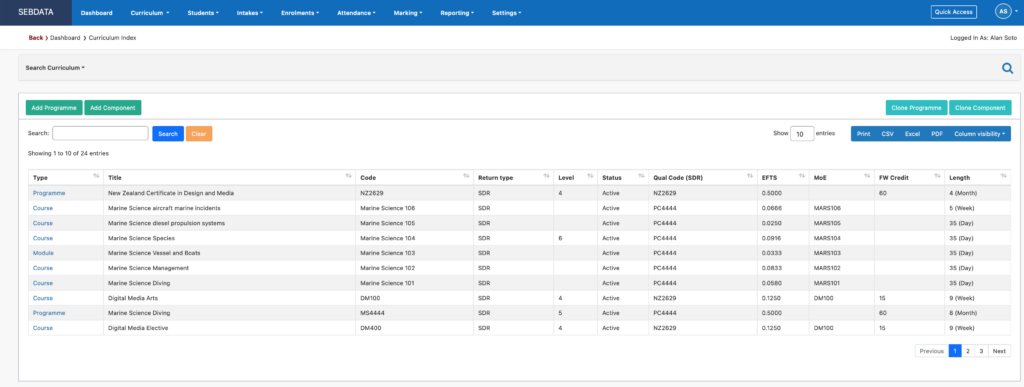On this page:
Curriculum Overview
At a high level, SELMA manages two different curriculum items – Programmes and Components.
Programmes are structured pathways through which learners can develop specific competencies and receive recognised certification from your institution. A programme can be:
- Your qualifications on offer
- A course you sell
Components are the building blocks that form the structure of a Programme, organised to deliver specific learning outcomes. A component can be:
- A Course or Module (depending on the terminology used by each education provider)
- A Unit Standard (a specific type of component accredited by NZQA)
- An assessment
- A subject
In New Zealand, programmes and courses can be officially reported to DXP Ngā Kete (as of early 2025) through Single Data Return (SDR).
SELMA gives you the option to indicate exactly which items must be reported by selecting a return type “SDR” when creating a course and/or programme.
Or else, if a certain assessment or course offered is irrelevant for SDR purposes, it can be excluded from the reporting by selecting “No Return”, remaining in SELMA as an internal tracker for the education provider. Further details are covered on the next chapter Programmes.
Manage Curriculum
The curriculum is created and maintained by anyone who is assigned a “Registrar” role in SELMA.
Navigate to Curriculum > Manage Curriculum.
The curriculum index displays a grid containing all curriculum items, whether it is a programme or component. Please refer to Working with Grids to better understand how to use and modify grid views in SELMA.

Curriculum Setup
To set up your curriculum:
- Create a programme.
- Create the components that belong to the programme
- Map the components into the corresponding programme.
Once the curriculum is configured, it typically remains unchanged throughout the academic year.
However, it is imperative that all information is filled out correctly and verified to ensure that no issues arise from initial errors – for example inaccurate compliance information, incorrect Credits or EFTS values.
Investing time and attention during the initial set up of programmes and components will prove beneficial in the long run, ensuring accurate and comprehensive information about your educational activities.
